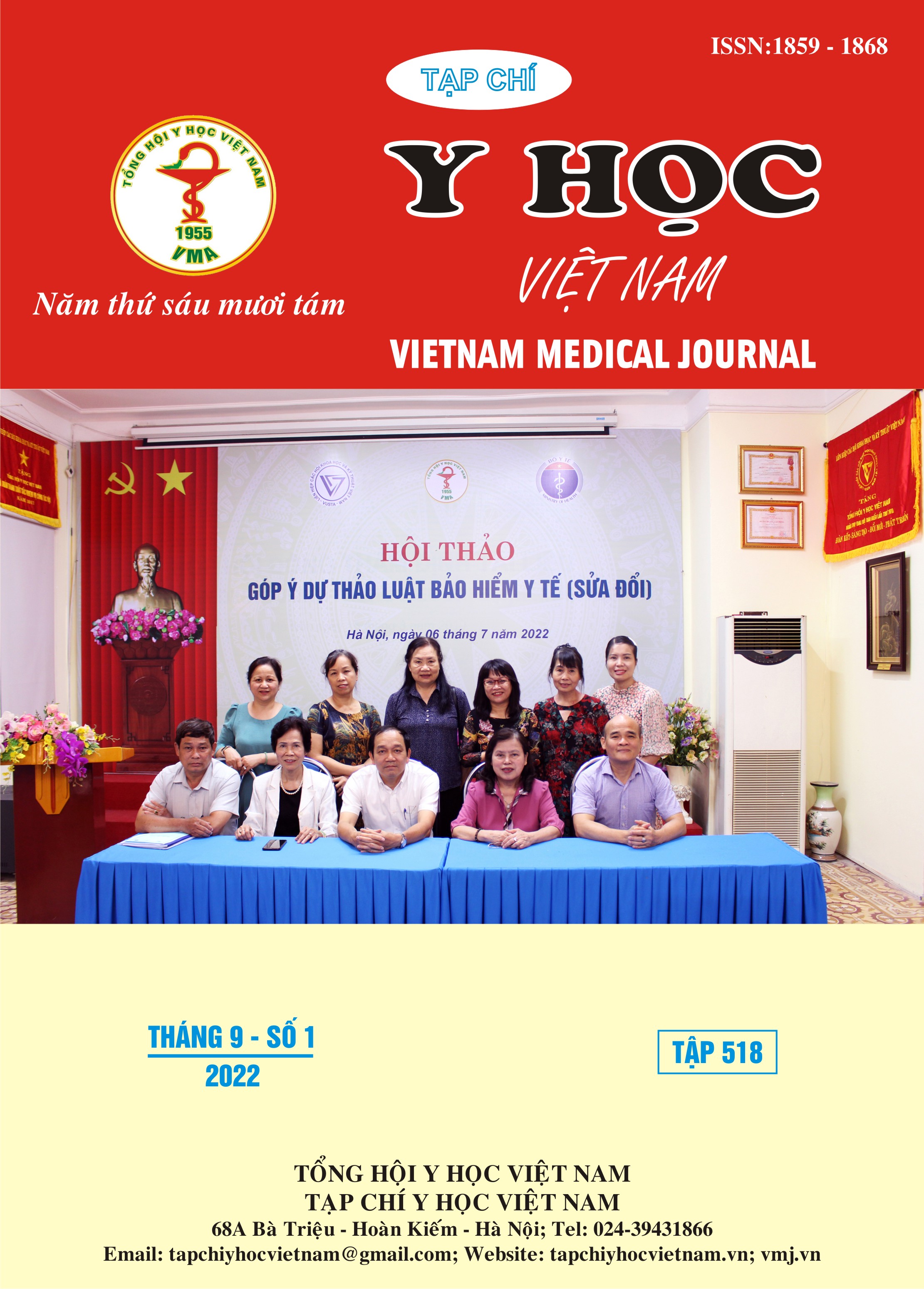CLINICAL, SUBCLINICAL CHHARACTERISTICS OF BREAST CANCER PATIENTS TREATED BY CYCLOPHOSPHAMID
Main Article Content
Abstract
Objectives: To describe clinical and subclinical characteristics of breast cancer patients treated with Cyclophosphamide. Subjects and methods: Descriptive-prospective cohort study, longitudinal follow-up on 68 breast cancer patients at Thu Duc City Hospital who were treated with a regimen containing Cyclophosphamide for 4-6 cycles. Results: Self-examination found that tumor was the most common functional symptom with 67.65%. The common tumor location in the group of patients was the upper and outer quarter (54.41%). The proportion of patients with axillary lymph nodes was 47.06% (32 cases). There were 4 patients (5.88%) with clinical symptoms of organ metastasis. The mean size of the tumors was 2.47 ± 0.89 cm. The characteristics of lesions on ultrasound were mainly: localized lesion (83.82%), unclear border (77.94%), hypoechoic (97.06%), solid structure (97.06%) and surrounding invasion (77.94%) mainly infiltrating the surrounding breast tissue, accounting for 45.59%. The main lesion characteristics on mammogram were localized lesions (82.35%), with unclear margins (80.88%), with calcified nodules (67.65%) and increased attenuation (83.82%). Invasive ductal carcinoma accounted for the majority (72.06%). The proportion of patients with negative endocrine receptors (both ER and PR were negative) was high, accounting for 72.05%. Conclusion: Mostly patients self-examined tumors, usually located in the upper and outer quarter position. Axillary lymph nodes account for a high percentage, the characteristics of lesions on ultrasound were mainly: localized lesions, unclear boundaries, hypoechoic, solid structure and surrounding invasion. The main lesion characteristics on mammogram were localized lesions, indistinct margins, calcified nodules and increased attenuation. Invasive ductal carcinoma was the majority. The proportion of patients with negative hormone receptor was high.
Article Details
Keywords
clinical and subclinical characteristics, Cyclophosphamide, breast cancer
References
2. Rijo John, Hana Ross (2010). The global economic cost of cancer. Atlanta, GA: American Cancer Society and LIVESTRONG.
3. Đặng Công Thuận (2012). Nghiên cứu các đặc điểm chẩn đoán hình ảnh, giải phẫu bệnh và tình trạng thụ thể nội tiết bệnh ung thư vú tại bệnh viện trường đại học y dược huế. Tạp chí phụ sản, 10(3): 250-257.
4. Phùng Thị Huyền (2016), Đánh giá kết quả hóa trị bổ trợ phác đồ 4AC+4T kết hợp trastuzumab trên bệnh nhân ung thư vú giai đoạn II, III có Her 2 neu dương tính, Luận án tiến sỹ y học, Đại học y Hà Nội.
5. Nguyễn Thị Mai Lan (2020), Nghiên cứu tỉ lệ mắc mới ung thư vú ở phụ nữ hà nội giai đoạn 2014 – 2016, Luận án tiến sỹ, Đại Học Y Hà Nội.
6. Donnelly. T.T. et al. (2013). Arab women's breast cancer screening practices: a literature review. Asian Pac J Cancer Prev, 14(8): 4519-28.


